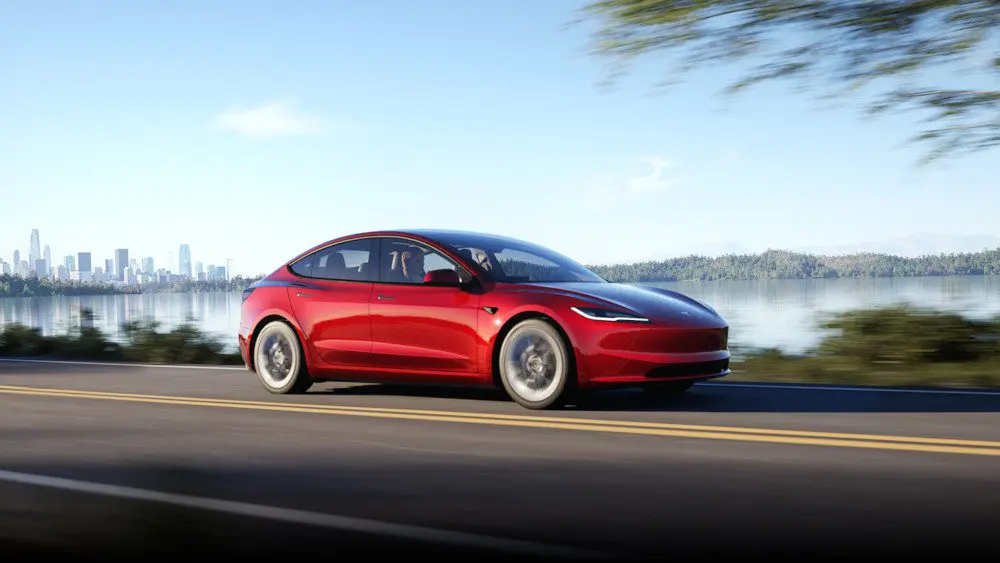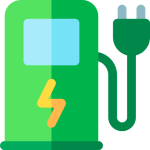
The fear of running out of charge—”range anxiety”—is often cited as the biggest hurdle for Australians considering the leap to an Electric Vehicle (EV).1 In a country defined by vast distances, this worry is understandable.2 However, for a rapidly increasing number of Australian EV owners, it’s becoming clear that range anxiety is a phantom. It’s not about the distance your car can’t go, but rather a simple matter of planning and patience for the unique conditions of regional travel.
By understanding your car, embracing slower overnight charging, and leveraging the evolving national charging landscape, long-distance EV travel across the Australian countryside is not just possible—it’s a relaxing and surprisingly efficient way to explore.
🗺️ Master Your Trip: Strategic Planning for the Regions
The first step to vanquishing range anxiety is to change your mindset. Driving an EV on a regional road trip requires a strategic approach, replacing the ‘fill-and-go’ mentality with ‘charge-while-you-stop.’3
📱 Utilise Smart Routing Apps
Forget relying solely on a single map or your car’s built-in navigator. Apps like PlugShare and A Better Route Planner (ABRP) are your most valuable co-pilots.
- PlugShare: This community-driven app is essential for finding all types of chargers, from DC fast chargers at roadhouses to the humble AC outlets at a holiday park.4 It includes user reviews, photos, and real-time tips on availability and reliability.5
- ABRP: This tool is brilliant for long-distance driving.6 You input your car model, current state of charge, and your destination, and it intelligently calculates a route based on charging stops, the speed of available chargers, and elevation changes. You can even adjust settings for things like desired arrival charge (e.g., 20%).
⚡ The 80/20 Rule of DC Fast Charging
While DC fast chargers (50kW to 350kW) are ideal for major highways, they’re not always necessary or cost-effective for a full charge. Charging speed dramatically slows down once your battery hits around 80% State of Charge (SoC) to protect the battery.7
Practical Tip: On a long day of driving, plan to DC fast charge only to 80-90% to save significant time.8 Only charge to 100% when absolutely necessary to make the full distance to your next reliable charging point.9
🏕️ Slow and Steady Wins the Race: Embracing AC Destination Charging
Regional Australia’s charging network is not just about the big, flashy fast chargers; it’s about reliable, accessible AC destination chargers that transform charging into a convenience, not a chore.
🔌 Leveraging Holiday Park Charging (Caravan Parks)
Holiday and Caravan Parks are a hidden gem for EV charging in regional areas, offering a perfect low-stress solution for overnight charging.
- What you need: Your EV often comes with a portable charging unit (sometimes called an EVSE) that can plug into a standard 10A wall socket (Level 1) or a more powerful 15A socket (often found on powered sites for caravans – Level 2, up to 3.6kW).10 You’ll typically need a 15A cable or an adjustable portable charger with the correct adapter.
- The Slower Speed Advantage: While 10A/15A charging is slow (it can take 10-20+ hours for a full charge), the beauty is you’re already stationary! By charging overnight, you can add 100-200+km of range while you sleep or enjoy your holiday.
- Communicate and Pay: Always ask the park management before plugging in.11 The electricity consumption for an EV is significantly higher than typical park usage (kettle, fridge), and many parks have an EV charging policy that requires an additional, negotiated fee (often a flat rate or per kWh).12 Never just plug into a standard power point without permission—it can be a safety risk and lead to an unexpected fee.
🏨 The Power of Overnight AC Destination Chargers
Many regional motels, hotels, and tourist attractions are installing dedicated Type 2 AC destination chargers (7kW or 22kW) to attract EV tourists.13
- 7kW Charging: This is the most common Level 2 charger and provides a healthy top-up, adding around 35-40km of range per hour. Park at 7:00 PM with 20% and by 7:00 AM, you’ll be sitting close to 100%—all while you’re enjoying dinner and a full night’s sleep.
- It’s Part of the Experience: Use the downtime. Your charge stops become natural breaks for local exploration, a pub lunch, or a hike.14 The car is “filling up” while you are “filling up” on the regional experience.
🔥 Battling the Elements: Interpreting WLTP for Harsh Australian Driving
One of the greatest sources of range anxiety stems from the gap between the official advertised range and what you see in the real world.15 This is especially true in Australia’s harsh environment.
🌡️ Heat, Hills, and High Speed: The Range Killers
The official Worldwide Harmonised Light-Duty Vehicles Test Procedure (WLTP) range is a laboratory figure designed for comparison, not a real-world guarantee.16 Australian driving conditions can significantly reduce this number.17
| Factor | Impact on Real-World Range | Mitigation Strategy |
| High Speed (110 km/h) | Aerodynamic drag increases exponentially, reducing range by 20-30% compared to urban driving. | Drive at or just below the limit (e.g., 90-100 km/h) if you need the extra range. |
| Air Conditioning | Running the AC to combat 40°C heat can reduce range by 10-15%. | Pre-condition the cabin while plugged in before departure to use ‘shore power’ instead of battery power. |
| Hills and Elevation | While regenerative braking recaptures energy on descents, the uphill climb consumes more energy than is recovered. | Plan for lower range on long, continuous ascents (e.g., crossing a Great Dividing Range pass). |
| Towing | Towing a caravan or trailer can halve or more your range due to the massive increase in weight and drag. | Plan charging stops 50% more frequently than normal. Use a route planner that accounts for towing weight. |
🛑 Build in a Buffer: The 20% Rule
To drive stress-free, adopt a safe planning buffer. When calculating your leg distance, assume you will only achieve 80% of your EV’s WLTP range under typical highway conditions, and perhaps even less in extreme heat or when towing.
- If your car has a 450km WLTP range, plan each leg to a maximum of 360km to give you a comfortable 20% safety buffer for unexpected detours, road closures, or charger queues.
🇦🇺 The Future is Bright: The Growing Network
The anxiety over a perceived lack of charging infrastructure is rapidly becoming a memory. Federal and State Government investments, coupled with private operators like Chargefox, Evie Networks, and the NRMA, are aggressively filling the gaps, particularly along key regional arteries. Every year, the gap between reliable DC fast chargers shrinks, and the number of convenient AC destination chargers multiplies.
Range anxiety is not a fundamental flaw in the technology; it is a temporary mindset waiting to be overcome by a simple shift in planning. For the Australian EV driver, the open road awaits—and with a smart approach to overnight charging, your next country adventure is just a fully charged battery away.
Interest in exploring EV-friendly holiday parks or caravan park networks in a specific Australian state to help you plan your next trip? See the the below table:
Here are the major networks and some of the parks that are specifically catering to electric vehicles:
New South Wales (NSW)
| Network | Parks with EV Charging | Key Details |
| Reflections Holidays | Ferry Reserve, Evans Head, Lennox Head, Coffs Harbour, Bonny Hills, Tuncurry, Eden, and Bermagui. | They have installed Type 2, 7kW EV charging stations at these eight parks, exclusively for paying guests. Reflections manages 41 parks across NSW. |
| NRMA Parks & Resorts | NRMA Jindabyne Holiday Park, NRMA Shellharbour Beachside Holiday Park, and NRMA Murramarang Beachfront Holiday Resort (mentioned in a list of NSW parks) have EV charging options (often via the Chargefox network). | NRMA also operates the largest regional fast-charging network in Australia. |
| BIG4 | Ingenia Holidays Old Bar Beach (a partner park) is confirmed to have EV charging. | Many BIG4 parks are implementing EV charging, so it’s always worth checking a specific park’s facilities. |
Victoria (VIC)
| Network | Parks with EV Charging | Key Details |
| NRMA Parks & Resorts | NRMA Halls Gap Holiday Park | Offers EV charging ports for guests staying in selected accommodation types, making it a great base for exploring the Grampians. |
| BIG4 | BIG4 Bendigo Marong Holiday Park | Offers new EV charging stations, which are free for guests staying in a Superior Cabin. |
Queensland (QLD)
| Network | Parks with EV Charging | Key Details |
| NRMA Parks & Resorts | NRMA Treasure Island Holiday Resort (Gold Coast) and NRMA Lake Somerset Holiday Park. | Lake Somerset offers free EV chargers for guests staying in their Superior Lakeview Villa, Lakeview Villa, and Log Cabin. |
| BIG4 | Turtle Sands Nature Resort | Offers EV chargers in select accommodation parking spaces, and fast chargers are available on the property for general use. |
FAQs
How do I find reliable chargers in small towns?
Use a combination of PlugShare, ABRP and network operator apps (Chargefox, Evie Networks, Tesla, NRMA). Look for user reviews and recent photos; reach out to local businesses or caravan parks to confirm availability and any fees.
Can I plug into a caravan park power point?
Sometimes, yes – but always ask management first. Ensure the outlet is RCD-protected and suitable for continuous charging. Use the correct portable EVSE or adapter; avoid extension leads and unsecured connections.
Should I always top up to 100% before a long leg?
Not necessarily. For time-efficient trips, charging to around 80-90% is usually optimal. Reserve 100% for occasions when you need the extra range to reach the next reliable charger.
How much does towing reduce EV range?
Towing can reduce range dramatically – often by 30-50% or more depending on weight and aerodynamics. Plan for shorter legs, more frequent charging and use route planners that account for towing if available.
What if a charger is out of order?
Have a backup plan. Identify alternate chargers on your route, include accommodation options with destination chargers, and keep network apps updated. In many regional areas a phone call to a local business can also reveal ad‑hoc charging options.
Are there safety concerns when charging overnight?
Minimise risk by using RCD-protected outlets, avoiding ad-hoc extension setups, and confirming with site management. Modern portable EVSEs include safety features, but always inspect the outlet and cable before use.
About EV Evolution
EV Evolution is the leading online platform dedicated to Australian electric vehicle owners and enthusiasts. We foster a vibrant community, delivering essential EV news and insights, and enhancing user engagement through our innovative, AI-powered chatbot for dynamic discussions. Our mission is to empower Australian electric vehicle owners and enthusiasts by fostering a vibrant, AI-driven online community that connects, informs, and advances the nation’s electric vehicle landscape.




